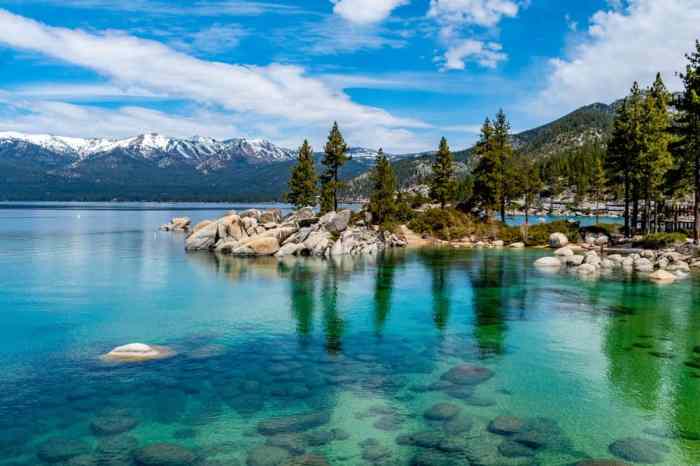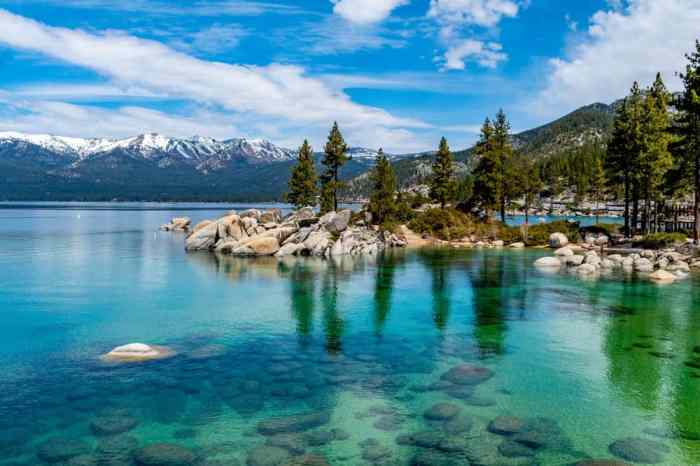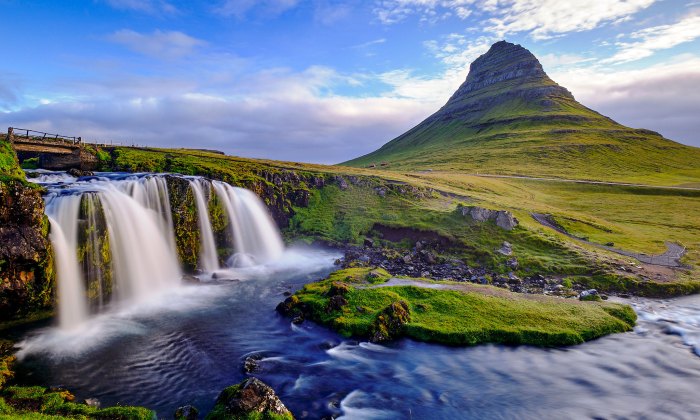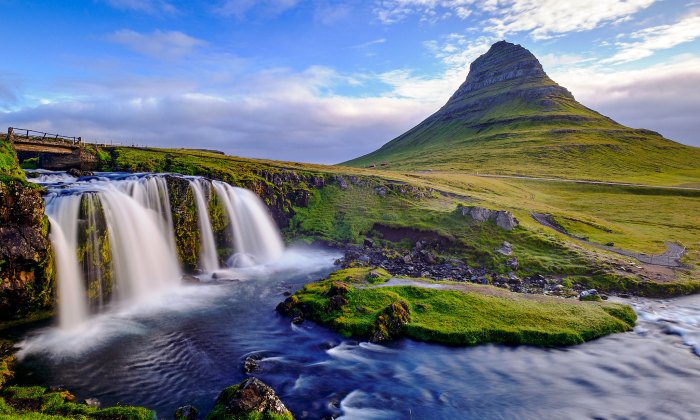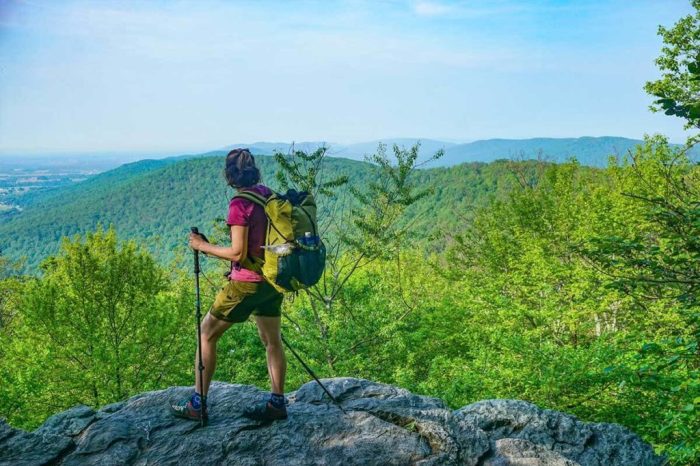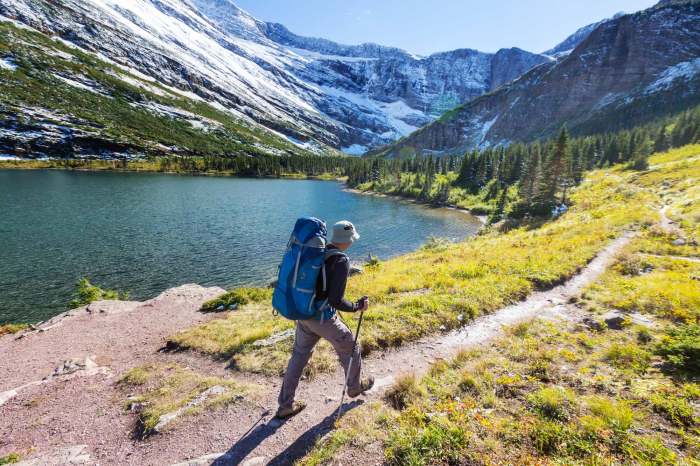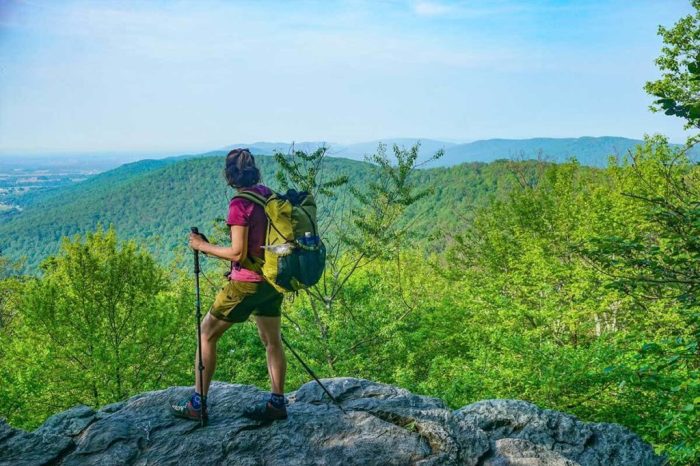Top things to do in Spain: A vibrant tapestry woven from sun-drenched beaches, historic landmarks, and passionate culture. This guide unveils the must-see destinations and unforgettable experiences that await you in this captivating country. From the awe-inspiring Alhambra to the artistic brilliance of the Sagrada Familia, Spain promises an enriching journey for every traveler. This comprehensive exploration delves into the diverse regions, offering a taste of their unique charm.
This exploration covers everything from historical landmarks and artistic experiences to coastal delights and culinary adventures. Discover the best of Spanish cities, experience the unique traditions, and uncover the practical tips to make your trip truly memorable. Whether you’re a history buff, an art enthusiast, a foodie, or a beach lover, this guide caters to all interests. Prepare to be amazed by the richness and diversity Spain has to offer.
Introduction to Spain
Spain, a vibrant tapestry woven from centuries of history and diverse cultures, captivates with its rich heritage and stunning landscapes. From the Moorish palaces of the south to the rugged peaks of the Pyrenees, the country boasts a unique blend of influences, leaving a lasting impression on every visitor. Its geographical location, nestled in the heart of the Mediterranean, has shaped its character and cuisine, creating a truly unique travel destination.The nation’s history is deeply intertwined with the development of European civilization.
From the Iberian Peninsula’s prehistoric inhabitants to the Roman Empire’s influence, and the subsequent Moorish and Christian kingdoms, Spain has been a crucible for cultural exchange and innovation. This dynamic interplay of civilizations has left an indelible mark on its architecture, art, and traditions, offering a wealth of experiences for the modern traveler.
Spain’s Cultural Diversity
Spain’s cultural richness is a testament to its complex history. Distinct regional identities, shaped by unique historical trajectories, contribute to the overall mosaic. Catalonia, for instance, maintains a strong sense of cultural pride, evident in its language and traditions. The Basque Country, with its unique language and traditions, provides another example of regional variations. This multifaceted character, encompassing various traditions, languages, and customs, makes Spain a captivating destination for those seeking cultural immersion.
Spain’s Geographical and Climatic Features
Spain’s geographical diversity is remarkable. Stretching across the Iberian Peninsula, it boasts towering mountain ranges, including the Pyrenees, and fertile plains. The Mediterranean coast, with its vibrant cities and picturesque beaches, contrasts sharply with the arid landscapes of the interior. This varied topography results in a diverse range of climates. The Mediterranean coast enjoys warm, sunny weather, while the mountainous regions experience cooler temperatures and potentially snowfall.
The climate significantly influences the agricultural practices and cultural traditions of each region.
Regions of Spain and Their Characteristics
Spain is divided into seventeen autonomous communities, each with its own unique characteristics. Catalonia, in the northeast, is known for its vibrant culture, distinct cuisine, and historical significance. Andalusia, in the south, is renowned for its Moorish heritage, flamenco dancing, and stunning beaches. The Basque Country, nestled in the north, is famed for its unique language and culinary traditions.
Spain’s got amazing sights, from flamenco shows to exploring ancient ruins. But if you’re looking for a luxurious escape after soaking up the Spanish sun, consider checking out some of the best luxury cabins USA has to offer. For a truly unforgettable experience, exploring these best luxury cabins usa could be the perfect blend of relaxation and adventure before heading back to explore more of Spain’s treasures.
Each region offers a different experience, appealing to diverse interests and preferences.
| Region | Characteristics |
|---|---|
| Andalusia | Moorish heritage, flamenco, stunning beaches, vibrant culture |
| Catalonia | Vibrant culture, distinct cuisine, historical significance |
| Basque Country | Unique language, culinary traditions, mountainous terrain |
Criteria for Selecting “Top Things to Do”
The selection of “top things to do” in Spain is based on a combination of factors, including historical significance, cultural relevance, and overall visitor experience. Sites that have influenced Spanish history, showcase artistic or architectural brilliance, and provide memorable experiences are prioritized. Accessibility, safety, and environmental considerations are also taken into account. The “top things to do” list aims to offer a balanced selection that appeals to diverse interests, ensuring a meaningful and enjoyable experience for visitors.
Spain boasts incredible sights, from the bustling tapas bars of Barcelona to the sun-drenched beaches of the Costa Brava. However, as we plan our trips, it’s crucial to consider the impact of climate change on travel. For instance, understanding how changing weather patterns might affect flights is vital for anyone planning a trip to Spain, or any destination for that matter.
This is why exploring the potential effects of climate change on flying is important. Check out five ways climate change will affect flying to learn more about how these changes might impact your next Spanish adventure. Ultimately, responsible travel choices are key to enjoying Spain’s beauty for years to come.
Must-See Historical Landmarks
Spain boasts a rich tapestry of history, woven into the very fabric of its iconic landmarks. From the breathtaking architecture of the Alhambra to the awe-inspiring Sagrada Familia, these monuments stand as testaments to Spain’s artistic and cultural heritage. Exploring these sites allows us to delve into the past, appreciating the artistry and innovation of generations gone by. They offer a profound understanding of Spain’s unique identity.The historical landmarks of Spain offer more than just architectural marvels; they embody the spirit and evolution of Spanish culture.
Each building tells a story, reflecting the social, political, and artistic movements of their time. The Alhambra, for instance, showcases the grandeur of Moorish Spain, while the Sagrada Familia represents the fervent creativity of Antoni Gaudí. The Prado Museum, on the other hand, is a repository of Spanish masterpieces, showcasing the nation’s artistic legacy. Visiting these landmarks provides a unique perspective on Spain’s complex and captivating history.
Iconic Architectural Styles and Artistic Movements
The architectural styles and artistic movements reflected in Spain’s historical landmarks are diverse and fascinating. The Alhambra, a masterpiece of Nasrid dynasty architecture, exemplifies the sophisticated artistry of Islamic Spain. Its intricate tilework, decorative arches, and courtyards are testaments to the cultural exchange and artistic innovation of the time. The Sagrada Familia, designed by Antoni Gaudí, showcases the Catalan Modernism movement, characterized by its unique organic forms and vibrant colours.
The Prado Museum, housing a vast collection of Spanish Masters, from the Renaissance to the 19th century, presents a panorama of European artistic styles. These landmarks highlight the rich and multifaceted nature of Spanish artistic expression.
Cultural Impact of Historical Landmarks
These landmarks play a significant role in shaping the cultural identity of Spain. They serve as powerful symbols of national pride and attract millions of tourists each year. The Alhambra, for example, represents the legacy of Moorish Spain and continues to inspire awe and admiration. The Sagrada Familia stands as a testament to Catalan creativity and pride.
The Prado Museum serves as a central hub for art appreciation, showcasing the artistic genius of Spain. These landmarks have significantly influenced the cultural landscape of Spain, fostering a sense of national identity and attracting international attention.
Table of Historical Landmarks
| Name | Location | Brief Description | Historical Context |
|---|---|---|---|
| Alhambra | Granada | A magnificent palace and fortress complex, showcasing intricate tilework, decorative arches, and courtyards. | Built by the Nasrid dynasty, representing the peak of Moorish architecture in Spain. |
| Sagrada Familia | Barcelona | A large basilica designed by Antoni Gaudí, characterized by its unique organic forms and vibrant colours. | An iconic example of Catalan Modernism, representing Gaudí’s innovative architectural style. |
| Prado Museum | Madrid | A renowned art museum housing a vast collection of Spanish Masters, including works from the Renaissance to the 19th century. | A repository of Spanish artistic heritage, showcasing the nation’s contribution to European art. |
Artistic and Cultural Experiences

Spain boasts a rich tapestry of artistic and cultural experiences, woven from centuries of history and innovation. From the breathtaking masterpieces of renowned artists to the vibrant rhythms of traditional music, Spain offers a sensory journey that captivates the soul. The country’s cultural festivals are a vibrant showcase of its traditions, while its diverse culinary scene reflects the country’s geographical and historical influences.Beyond the iconic landmarks, Spain’s true beauty lies in its intricate artistic and cultural heritage.
This vibrant expression manifests in various forms, offering a deep insight into the nation’s soul. Immerse yourself in the artistic brilliance, the rhythmic pulse of music, and the flavourful tapestry of Spanish cuisine.
The Vibrant Art Scene
Spanish art has a long and illustrious history, with contributions from diverse periods and styles. From the grandeur of the Renaissance to the revolutionary movements of the 20th century, Spain’s artistic landscape is a testament to human creativity. Renowned artists like Pablo Picasso, Salvador Dalí, and Joan Miró have left an indelible mark on the world of art, pushing the boundaries of artistic expression and shaping global perceptions of creativity.
Spain boasts incredible sights, from flamenco shows to sun-drenched beaches. But if you’re looking for a truly unforgettable journey, consider the scenic beauty of a train ride like the Caledonian Sleeper, Britain’s best train journey. the caledonian sleeper britains best train journey offers a unique experience that sets the stage for exploring further. Afterwards, exploring the diverse culture and vibrant atmosphere of Spain’s cities and towns will make for a fantastic trip.
Their works often reflect the social and political climates of their times, providing a glimpse into the cultural context of Spain’s development.
Spanish Musical Traditions
Spain’s musical traditions are as diverse as its landscapes. From the passionate rhythms of flamenco to the haunting melodies of classical guitar music, Spanish music offers a spectrum of experiences. Flamenco, a deeply rooted art form, combines passionate singing, intricate guitar playing, and expressive dance. The passionate intensity of flamenco, with its emotional depth, has captivated audiences worldwide.
Beyond flamenco, Spain’s musical heritage encompasses a wide range of styles, including classical music, pop, and contemporary genres. This richness reflects the country’s dynamic and ever-evolving cultural identity. Numerous cultural festivals celebrate this rich musical tradition, bringing together performers and audiences for unforgettable experiences.
Cultural Festivals
Spain is a land of vibrant cultural festivals, celebrating traditions, showcasing artistic talent, and connecting communities. These festivals, which often span multiple days or weeks, are integral to Spanish culture, offering a unique opportunity to immerse yourself in the country’s vibrant traditions. These events provide a vibrant platform for artistic expression, fostering a sense of community and shared cultural identity.
Spanish Cuisine
Spanish cuisine is a delightful fusion of regional flavors, reflecting the country’s diverse geography and historical influences. From the sun-drenched Mediterranean coast to the mountainous regions of the interior, each region boasts unique culinary specialties. Spanish cuisine, rich in flavour and tradition, is a sensory experience. From tapas, small plates of deliciousness, to hearty stews, the culinary tapestry is a reflection of Spain’s diverse heritage.
The use of fresh ingredients, vibrant spices, and traditional cooking methods all contribute to the exceptional quality of Spanish cuisine. The various regional dishes, each with its own unique flavour profile, provide a fascinating insight into Spain’s cultural diversity.
Comparison of Art Forms
| Art Form | Characteristics | Notable Artists | Historical Period |
|---|---|---|---|
| Flamenco | Passionate singing, guitar playing, and dance; often expressing intense emotions | José Greco, Camarón de la Isla | 19th-20th centuries |
| Spanish Painting | Diverse styles from Renaissance to modernism; often reflecting Spanish history and culture | Francisco Goya, Diego Velázquez | 16th-20th centuries |
| Spanish Architecture | Variety of styles from Moorish to modern; often incorporating regional materials and influences | Antoni Gaudí | 11th-21st centuries |
Coastal Delights and Natural Wonders
Spain’s coastline boasts stunning beaches, dramatic cliffs, and picturesque fishing villages, a captivating blend of natural beauty and vibrant human activity. From the sun-drenched shores of the Mediterranean to the rugged Atlantic coast, the country offers a diverse range of coastal experiences. Beyond the beaches, Spain’s interior conceals a treasure trove of mountainous landscapes, national parks, and hidden gems, inviting exploration and discovery.The natural wonders of Spain extend far beyond its coasts, encompassing a rich tapestry of ecosystems.
From the towering peaks of the Pyrenees to the verdant valleys of the Sierra Nevada, the country’s diverse terrain provides habitats for a remarkable array of flora and fauna. Spain’s national parks, such as the Sierra Nevada National Park, showcase the country’s commitment to environmental conservation and offer opportunities for hiking, wildlife viewing, and appreciating the intricate balance of nature.
Spanish Coastal Destinations
Spain’s coastal regions offer a plethora of captivating destinations, each with its unique character and attractions. The varied landscapes and activities available cater to diverse interests and preferences, making it a haven for both relaxation and adventure.
- Costa Brava, Catalonia: Known for its dramatic cliffs, secluded coves, and charming fishing villages. Activities range from swimming and sunbathing to hiking and exploring the historic towns like Tossa de Mar. The region’s dramatic coastline and the presence of ancient Roman ruins provide a rich tapestry of history and nature.
- Costa del Sol, Andalusia: Famous for its golden beaches, vibrant nightlife, and numerous golf courses. A blend of historical charm, modern amenities, and a relaxed atmosphere make it an attractive option for tourists. The extensive stretches of sand and the availability of diverse activities make it a popular destination for a range of interests.
- Canary Islands: A volcanic archipelago boasting black sand beaches, lush landscapes, and unique flora and fauna. These islands are a paradise for nature lovers and adventure seekers. The varied terrain and volcanic landscapes provide opportunities for hiking, exploring, and experiencing a different kind of natural beauty.
- Balearic Islands: A group of islands, including Mallorca, Ibiza, and Menorca, renowned for their stunning beaches, crystal-clear waters, and lively nightlife. The vibrant culture, beautiful beaches, and abundance of activities make these islands a magnet for tourists.
Ecological Significance of Spain’s Landscapes
Spain’s diverse landscapes hold significant ecological importance, supporting a rich biodiversity. The country’s national parks and protected areas play a crucial role in safeguarding unique ecosystems and the species that inhabit them. These areas contribute to the overall biodiversity of the region and offer a glimpse into the intricate balance of nature.
- Biodiversity hotspots: Spain’s diverse landscapes, from the Mediterranean coast to the mountainous regions, support a wide range of plant and animal species. These ecosystems provide habitats for many unique species that are found nowhere else in the world. The different altitudes and climates contribute to this remarkable biodiversity.
- Conservation efforts: Spain has established numerous national parks and protected areas to safeguard its natural heritage. These efforts aim to preserve the biodiversity and ecosystems that are integral to the country’s natural beauty. These protected areas are vital for the survival of various plant and animal species, preserving them for future generations.
Coastal Destinations Table
| Location | Activities | Unique Features |
|---|---|---|
| Costa Brava | Swimming, sunbathing, hiking, exploring historic towns | Dramatic cliffs, secluded coves, charming fishing villages |
| Costa del Sol | Swimming, sunbathing, golfing, exploring historical sites | Golden beaches, vibrant nightlife, golf courses |
| Canary Islands | Hiking, wildlife viewing, exploring volcanic landscapes | Volcanic landscapes, black sand beaches, unique flora and fauna |
| Balearic Islands | Swimming, sunbathing, exploring historical sites, nightlife | Stunning beaches, crystal-clear waters, lively nightlife |
Culinary Adventures
Spain’s culinary scene is a vibrant tapestry woven from regional traditions and influences. From the sun-drenched coastlines to the rugged mountain ranges, each region boasts a unique flavor profile, reflecting its terroir and history. The Spanish embrace food as a social experience, with meals often taking center stage in family and community gatherings. This passion for food is evident in the meticulous preparation and artful presentation of dishes.
Regional Variations in Spanish Cuisine
Spanish cuisine encompasses a wide array of styles, from the hearty stews of the north to the fresh seafood of the Mediterranean coast. Regional differences are significant, influenced by local ingredients, historical trade routes, and cultural practices. These variations are a testament to the diverse landscapes and histories that shape Spain.
Famous Dishes and Must-Try Delicacies
Spanish cuisine is brimming with iconic dishes that have gained global recognition. From the rich paella to the delicate tapas, Spanish culinary traditions offer a delightful journey for the palate. These dishes, along with regional specialties, showcase the country’s commitment to fresh, high-quality ingredients.
- Paella: A vibrant rice dish, often featuring seafood, chicken, or vegetables, showcasing the region’s agricultural bounty. Its preparation varies based on location, reflecting the diversity of ingredients available in different areas.
- Tapas: Small dishes, often served as appetizers, allowing for exploration of various flavors and textures. Tapas culture is a social tradition, encouraging sharing and interaction.
- Jamón Ibérico: A cured ham, prized for its rich flavor and texture. The unique flavor profile comes from the breed of pig and the curing process, which varies depending on the region.
- Gazpacho: A chilled tomato soup, perfect for hot summer days. Its cooling properties make it a refreshing culinary experience, embodying the essence of Spanish summer cuisine.
Culinary Traditions and Ingredients, Top things to do in spain
Spanish cuisine heavily relies on fresh, seasonal ingredients. Garlic, olive oil, paprika, and tomatoes are staples, frequently appearing in numerous dishes. The use of fresh herbs, such as rosemary and thyme, adds depth and complexity to the flavor profiles. The quality of ingredients plays a crucial role in creating the vibrant and flavorful experiences offered by Spanish cuisine.
Culture Surrounding Dining in Spain
Dining in Spain is a social event, often stretching over several hours. Family meals and gatherings are common, where conversations and laughter accompany the enjoyment of shared plates. The culture of tapas fosters interaction and sharing, making dining a communal experience. The relaxed and convivial atmosphere surrounding meals highlights the importance of connection and shared experiences.
Table of Regional Cuisines
| Region | Dishes | Unique Ingredients |
|---|---|---|
| Andalusia | Gazpacho, Salmorejo, seafood paella | Fresh seafood, tomatoes, sherry |
| Catalonia | Paella, fideuà, tapas | Seafood, saffron, olive oil |
| Basque Country | Pintxos, Txuleton, seafood stew | Fresh seafood, peppers, cider |
| Galicia | Pulpo a feira, empanadas, seafood stew | Fresh seafood, seaweed, potatoes |
| Valencia | Paella, Horchata, Fideuà | Rice, saffron, seafood, vegetables |
Urban Exploration and City Breaks
Spain’s vibrant cities offer a captivating blend of history, culture, and modern life. From the bustling streets of Madrid to the sun-drenched squares of Seville, each city boasts unique architectural gems, fascinating museums, and lively nightlife. Exploring these urban landscapes provides a deeper understanding of Spain’s rich heritage and diverse traditions.Discovering the historical and cultural significance of these cities unveils a captivating narrative.
Each city possesses a distinct character, shaped by centuries of influences, from Moorish rule to Renaissance art. These cities are more than just destinations; they are living museums that tell stories of Spain’s past and present.
Major Spanish Cities and Their Attractions
Spanish cities are renowned for their rich cultural heritage and historical significance. From the grandeur of Madrid to the artistic flair of Barcelona, each city offers a unique tapestry of experiences. Delving into their historical and cultural layers provides a rich understanding of Spain’s diverse past.
- Madrid: The capital city of Spain, Madrid boasts a captivating mix of historical monuments and modern architecture. Iconic landmarks such as the Royal Palace, the Prado Museum, and the Reina Sofía Museum house masterpieces of Spanish art and history. Beyond the museums, the vibrant atmosphere of the city’s plazas and markets offers a glimpse into the daily life of Madrileños.
Experiences such as attending a flamenco show or enjoying a tapas crawl are integral to experiencing the city’s essence.
- Barcelona: Known for its architectural marvels, Barcelona is a city that seamlessly blends modernity with its rich Catalan heritage. Gaudi’s Sagrada Família, Park Güell, and Casa Batlló are just a few examples of his innovative architectural designs. The city’s lively atmosphere, including its beaches and waterfront promenades, complements the architectural wonders. Exploring the Gothic Quarter, with its narrow streets and historical buildings, provides a deeper understanding of Barcelona’s history.
- Seville: A city steeped in Andalusian tradition, Seville is renowned for its captivating architecture and vibrant culture. The iconic Seville Cathedral and the Alcázar of Seville are testaments to the city’s rich history and intricate artistry. Experiences like a traditional tapas tour or attending a flamenco show immerse visitors in the heart of Andalusian culture. The city’s lively plazas and vibrant nightlife are a defining feature.
- Valencia: Located on the eastern coast of Spain, Valencia combines historical charm with modern amenities. The City of Arts and Sciences, a stunning architectural complex, showcases the city’s contemporary side. Visiting the Central Market, experiencing a traditional paella dinner, and enjoying the city’s beaches offer a unique blend of cultural experiences. The city’s commitment to innovation and its rich culinary traditions are prominent features.
Popular City Breaks and Their Attractions
City breaks offer a concentrated dose of urban exploration, providing visitors with a glimpse into the heart of a city’s soul. These breaks, often incorporating multiple attractions and activities, allow travelers to experience the city’s diverse offerings within a relatively short time frame.
- Madrid City Break: Explore the Royal Palace, delve into the masterpieces at the Prado Museum, and immerse yourself in the vibrant atmosphere of the city’s plazas. Enjoy a traditional Spanish dinner and a flamenco show for a truly immersive experience.
- Barcelona City Break: Marvel at Gaudí’s architectural wonders, wander through the Gothic Quarter, and soak up the Mediterranean vibes along the city’s beaches. Indulge in the culinary delights of tapas and paella, and experience the vibrant nightlife.
- Seville City Break: Experience the grandeur of the Seville Cathedral and the Alcázar of Seville, and immerse yourself in the city’s rich Andalusian culture through a flamenco show. Enjoy a traditional tapas tour and stroll through the city’s charming squares.
Table of Major Spanish Cities
The table below summarizes major Spanish cities, their key attractions, and unique experiences.
| City Name | Attractions | Unique Experiences |
|---|---|---|
| Madrid | Royal Palace, Prado Museum, Reina Sofía Museum | Flamenco show, tapas crawl, Royal Palace tour |
| Barcelona | Sagrada Família, Park Güell, Casa Batlló, Gothic Quarter | Gaudí architecture tour, beachside relaxation, tapas in El Born |
| Seville | Seville Cathedral, Alcázar of Seville, Plaza de España | Flamenco show, tapas tour, stroll through the Santa Cruz neighborhood |
| Valencia | City of Arts and Sciences, Central Market, Turia Gardens | Paella dinner, exploring the historic center, beach time |
Unique Experiences
Spain offers a captivating tapestry of unique experiences, beyond the typical tourist hotspots. From the passionate rhythms of flamenco to the historical echoes of bullfights, and the vibrant celebrations of festivals, Spain invites you to delve into its rich cultural heritage. Embracing these experiences requires a respectful understanding of the traditions and customs, fostering a deeper appreciation for the country’s unique character.Respecting local customs and traditions is crucial for a positive and meaningful experience.
Showing genuine interest in the local culture, whether through actively participating in events or simply observing with an open mind, is key to a richer understanding. This mindful engagement allows for a more profound connection with the local community and fosters mutual respect.
Flamenco Performances
Flamenco is a passionate and expressive art form deeply rooted in Spanish culture. It’s a fusion of music, dance, and song, often conveying intense emotions and storytelling. Flamenco performances are dynamic and unpredictable, showcasing the artistry of the performers. These performances are not simply entertainment; they are a vital part of Spanish cultural identity. They reflect the country’s history and the struggles and triumphs of its people.
Bullfights
Bullfighting, a deeply controversial aspect of Spanish culture, remains a significant part of the country’s heritage for many. It is a centuries-old tradition that involves a bull and a matador. The spectacle involves skill, courage, and tradition. The tradition of bullfighting is complex, with passionate defenders and fierce opponents. Its cultural significance is undeniable, although its ethical implications are a subject of ongoing debate.
Festivals and Celebrations
Spain boasts a vibrant calendar of festivals and celebrations, each with its unique character and significance. From the vibrant processions of Semana Santa (Holy Week) in various cities to the lively street parties during the summer, these events offer a glimpse into the spirit of the region. Each festival embodies the history, traditions, and artistic expression of the community that celebrates it.
Other Cultural Events
Beyond the well-known events, Spain is full of smaller cultural events and activities. Local markets, traditional craft demonstrations, and workshops provide a unique insight into local life and artistry. Attending these events can foster a deeper connection with the Spanish culture and communities.
| Activity | Location | Description |
|---|---|---|
| Flamenco Show | Madrid, Seville, Granada | Experience the passionate artistry of flamenco dancers and musicians. Expect a dynamic and emotional performance reflecting Spanish culture. |
| Bullfight (optional) | Various locations throughout Spain, especially in southern Spain | Observe a bullfight, a traditional Spanish spectacle, with caution and respect. Understand its cultural significance, while acknowledging differing views on its ethics. |
| Semana Santa Processions | Various locations throughout Spain | Witness the elaborate and moving processions of Holy Week, showcasing the religious devotion and artistic craftsmanship of the region. |
| Local Market | Numerous towns and cities | Explore local markets for fresh produce, artisan crafts, and traditional products. Engage with vendors and experience the daily life of the community. |
Practical Tips for Travelers
Planning a trip to Spain can be an exciting adventure, but careful preparation is key to ensuring a smooth and enjoyable experience. From navigating the transportation system to understanding local customs, these practical tips will help you make the most of your Spanish journey. Thorough planning ensures you can fully immerse yourself in the vibrant culture and breathtaking landscapes without unnecessary stress.Understanding the nuances of travel in Spain allows you to appreciate the country’s rich history and modern appeal, while saving you time and money.
Whether you’re a seasoned traveler or a first-time visitor, these insights will equip you with the knowledge and tools to plan your perfect Spanish adventure.
Travel Planning and Accommodation
Effective travel planning is crucial for a seamless trip. Start by researching your desired destinations and activities, considering factors like the time of year, your budget, and the type of experience you’re seeking. Booking accommodations in advance, especially during peak season, is highly recommended to secure your preferred options. This allows for flexibility and peace of mind during your trip.
Consider a variety of accommodation options, from budget-friendly hostels to luxurious hotels, to suit your needs and preferences. Airbnb and similar platforms offer a range of unique and often more affordable options, allowing you to experience local neighborhoods and gain insight into the culture.
Transportation Options
Spain offers a well-developed transportation network, making it easy to get around. High-speed trains (AVE) are a convenient and efficient way to travel between major cities, offering a fast and comfortable journey. Buses are an economical alternative for longer distances, while local trains and metro systems efficiently cover urban areas. Consider purchasing a regional transport pass for cost-effectiveness, especially if you plan on extensive travel within a specific region.
Knowing these options will help you choose the most suitable mode of transport based on your trip’s needs.
Budgeting for Travel in Spain
Spain caters to various budgets, offering a range of dining and accommodation options. Food costs can vary significantly depending on the type of establishment and location. Eating at local tapas bars or smaller restaurants can be more budget-friendly than upscale dining experiences. Consider preparing some meals yourself to reduce food expenses. Set a daily or weekly budget for food and activities to ensure financial control and prevent overspending.
Necessary Documents and Visas
Before traveling, ensure you have all necessary travel documents, including a valid passport and any required visas. Check the specific visa requirements based on your nationality and the length of your stay. Having these documents readily available will prevent any last-minute issues. The specific requirements may vary depending on your nationality and the duration of your stay.
Recommended Travel Agencies and Resources
Numerous travel agencies and online resources can assist in planning your Spanish adventure. Websites like TripAdvisor, Booking.com, and Expedia offer extensive information on accommodations, activities, and transportation. Consider using these resources to gather information and compare options. Consult travel agents specializing in Spanish travel for personalized recommendations and assistance. Local travel guides and tour operators can provide deeper cultural insights and tailored experiences.
Important Travel Tips
| Category | Tip |
|---|---|
| Packing | Pack light, comfortable clothing suitable for the weather. Include comfortable walking shoes, as you’ll be doing a lot of exploring. Don’t forget essentials like medications, toiletries, and any necessary documents. |
| Currency Exchange | Exchange currency before your trip or use ATMs for convenient and often more favorable exchange rates. Be aware of the local currency and exchange rates. |
| Safety Precautions | Be mindful of your belongings in crowded areas. Use reputable taxis or ride-sharing services. Research local customs and etiquette to avoid any misunderstandings. Keep a copy of your passport and important documents separate from the originals. |
Final Review: Top Things To Do In Spain

In conclusion, Spain offers a plethora of experiences that cater to every taste and interest. From the historical grandeur of its landmarks to the vibrant energy of its cities, and the stunning beauty of its coastlines, Spain truly has it all. This comprehensive guide provides a starting point for planning your unforgettable Spanish adventure. Remember to embrace the local culture, savor the delicious cuisine, and create lasting memories in this remarkable country.

